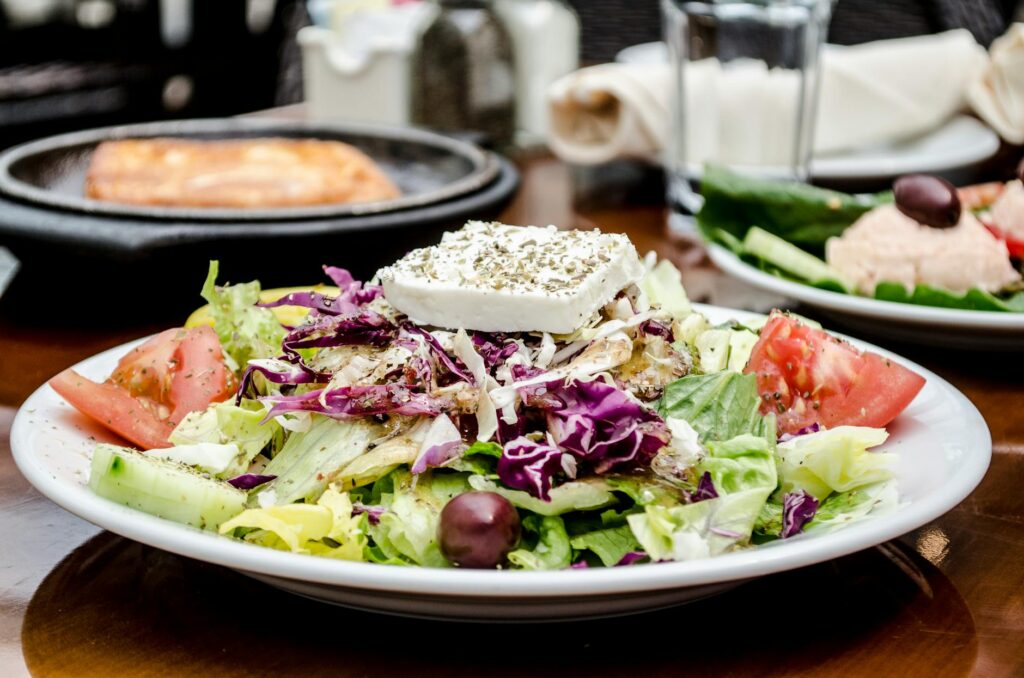The Greek salad, or Horiatiki (χωριάτικη) salad, is more than just a simple dish; it’s a celebration of fresh, vibrant ingredients and the sunny flavors of the Mediterranean. This iconic salad, with its combination of crisp cucumbers, juicy tomatoes, salty olives, and creamy feta, is a testament to the beauty of simplicity. Let’s dive into the world of this culinary masterpiece.
The Humble Cucumber: More Than Just a Veggie
The cucumber, a key player in the Greek salad, provides a refreshing crunch and subtle hydration. Choosing the right cucumber is crucial; look for firm, unblemished ones with smooth skin. Learn more about selecting the perfect cucumber for your next salad.

Tomatoes: The Juicy Heart of the Salad
Ripe, juicy tomatoes are essential for a truly delicious Greek salad. The sweetness of the tomatoes perfectly balances the saltiness of the feta and olives. For the best flavor, opt for heirloom varieties or locally grown tomatoes, whenever possible. Their superior taste elevates the entire experience. Find the best tomatoes near you.

Olives: A Burst of Briny Goodness
Kalamata olives, with their deep purple hue and intense briny flavor, are the traditional choice for Greek salad. However, you can experiment with other olives, such as Castelvetrano or green olives, to add a different dimension of taste. Remember that the type of olive you choose significantly influences the overall flavor profile.
Feta: The Creamy, Salty Star
Feta cheese, a staple in Greek cuisine, brings a salty, tangy element to the salad that is hard to resist. Look for high-quality feta, preferably one made from sheep’s milk or a blend of sheep and goat’s milk for the most authentic taste. Crumbling it over the salad just before serving ensures its creaminess is preserved.Learn how to make your own feta at home.
[IMAGE_3_HERE]
The Dressing: Simple Perfection
The dressing for a Greek salad is wonderfully simple: high-quality extra virgin olive oil, a splash of red wine vinegar, a pinch of oregano, salt, and freshly ground black pepper. The ratio of oil to vinegar is a matter of personal preference; start with a 3:1 ratio and adjust to your taste.
More Than Just a Salad: A Cultural Icon
The Greek salad is more than just a dish; it’s a symbol of Greek culture and hospitality. Sharing this vibrant salad with friends and family is a true culinary delight. It represents the simplicity and freshness of Mediterranean cuisine. Explore other traditional Greek recipes.
Variations and Twists
While the traditional Greek salad is perfect as it is, feel free to experiment with variations. Adding some red onion for a bit of bite or capers for a briny punch can significantly elevate the experience. You can even experiment with different herbs like fresh dill or mint. Find more creative variations online.
[IMAGE_4_HERE]
Conclusion: Savor the Simplicity
The Greek salad stands as a testament to the power of fresh, high-quality ingredients. Its simplicity allows the natural flavors to shine, creating a dish that is both refreshing and deeply satisfying. So, gather your ingredients, embrace the simplicity, and experience the joy of a truly iconic salad. Learn more about the Mediterranean diet.
